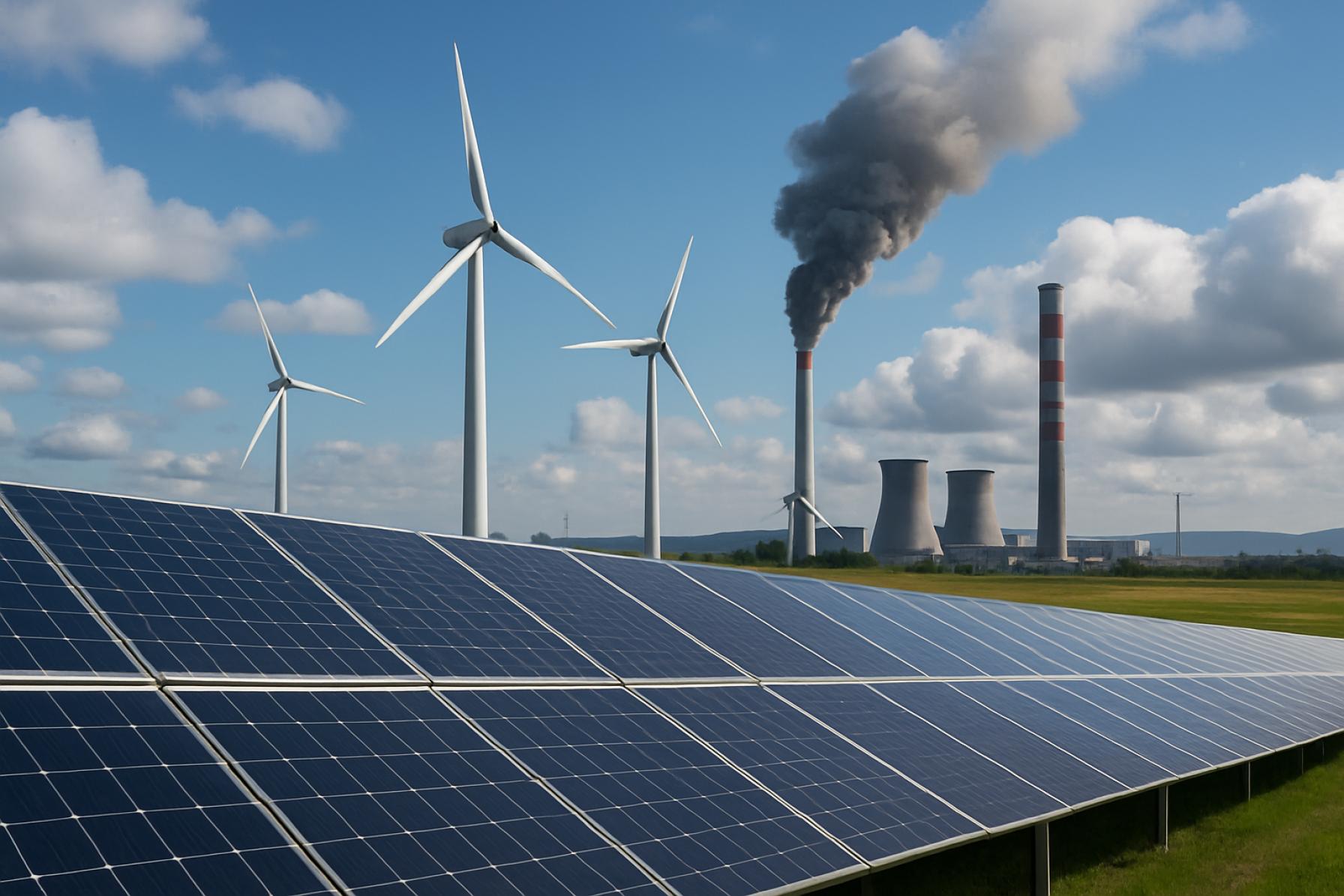Could Digitalization Slash Energy Costs and Emissions Across Eastern Europe? Here’s What a New UNECE Study Reveals
UNECE study exposes $150B opportunity: Digital energy transformation aims to cut emissions 70% and costs 80% by 2030 in Eastern Europe.
- $150 Billion: Investment needed by 2030 for clean energy shift
- 70%: Potential carbon emissions reduction with smart technologies
- 80%: Possible energy cost savings with digital optimization
- 60%: Share of natural gas and coal in the region’s energy mix
A seismic shift is sweeping across South-Eastern and Eastern Europe, the Caucasus, and Central Asia. To break free from aging Soviet-era grids and crippling fossil fuel dependence, these regions face a $150 billion challenge, but also a breathtaking opportunity.
The latest UNECE study makes it clear: digitalizing power systems—embracing AI, IoT, and Virtual Power Plants—could slash emissions by up to 70%, making clean energy affordable and accessible.
And the clock is ticking: countries like Albania, Belarus, Georgia, Kyrgyzstan, North Macedonia, Republic of Moldova, and Ukraine are in a race to modernize. Over 60% of their power still comes from gas and coal, threatening energy security, finances, health—and the climate.
Why Is Digitalization the Game Changer?
AI and IoT are primed to revolutionize how electricity is produced, delivered, and consumed. Imagine grids that learn, predict, and self-heal; power plants you can manage from a smartphone, and smart meters optimizing every watt.
The UNECE study reveals digital tools can bridge the gap between old infrastructure and clean futures. For these nations, advanced analytics reveal hidden inefficiencies while “digital twins” simulate scenarios and prevent outages.
Q: What Are the Main Roadblocks?
Several daunting hurdles threaten progress:
– Ageing Infrastructure: In Belarus, most power plants are over 30 years old, guzzling maintenance budgets. In Georgia, crumbling transmission lines lose nearly 12% of generated electricity before it can be used.
– Fossil Fuel Dependency: Moldova imports about 70% of its power and Belarus relies on Russian gas for half its energy.
– Funding Gaps: Albania, for instance, struggles to secure $300 million for renewable projects; Belarus has raised only 5% of the funds it needs.
– Skill Shortages: Nearly one in three Georgian energy professionals lack clean tech training.
– Environmental Threats: Belarus alone emits 8 million tonnes of CO2 annually from energy—while North Macedonia’s coal addiction leads to some of the worst air pollution in Europe.
How-To: Navigate the Clean Energy Transition in 2025
UNECE’s blueprint points to three transformative moves:
1. Digitally Retrofit Infrastructure: Upgrading grid equipment with sensors and software is step one. Smart solutions slash energy losses and boost reliability.
2. Promote Hybrid Energy Models: Combining natural gas with hydrogen or renewables bridges the gap—and keeps the lights on.
3. Build Smart, Secure Grids: Standardizing digital systems and connecting grids across borders turbocharges efficiency and resilience.
Major infrastructure like the Trans-Caspian high-voltage line could be the spine of a truly interconnected, green energy market.
Q: What About Equity and Jobs?
UNECE’s findings stress people-first innovation. Policy, retraining, and research are vital so that digitalization uplifts workers and communities. The goal: a just, resilient transition—not just tech upgrades but real improvement in lives.
What Actions Are Already Underway?
At the May 2025 UNECE-UNDP workshop in Minsk, over 100 leaders—governments, industry, and experts—convened to chart next steps. From pilot projects testing AI-based grid management to new curricula for energy workers, change is happening. Nations are forming regional alliances and seeking investment partners for smarter, sustainable futures.
For further exploration, visit UNECE, dive into global energy data at International Energy Agency, or stay updated on innovation through United Nations portals.
Take Action: The 2025 Energy Revolution Starts Now
The path is clear: embrace digitalization, innovate, and invest—for a cleaner, more resilient energy future.
- ✅ Prioritize digital retrofits and advanced analytics in energy upgrades
- ✅ Back hybrid, flexible energy sources (hydrogen, renewables, gas)
- ✅ Support workforce upskilling and inclusive transition policies
- ✅ Push for cross-border energy integration and investment
- ✅ Make ethics, equity, and cybersecurity central to your digital strategy
Don’t wait—empower your nation or organization to lead the clean energy transformation. The technology and momentum are here—join the revolution today!



